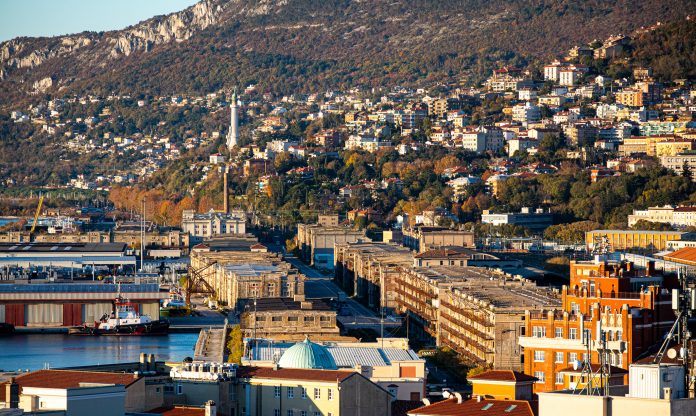by InTrieste
In a decisive yet contentious vote, Trieste’s City Council has approved a major project financing proposal for the redevelopment of the historic Porto Vecchio, a significant stretch of waterfront that has long awaited revitalization. The proposal, advanced by the consortium of Costim, Elmet Srl, and Impresa Percassi Spa, paves the way for private construction initiatives that are set to transform the former industrial port into a vibrant urban area.
The council vote, which passed unanimously among those present, has sparked controversy, not only for its implications for Trieste’s skyline and economic future but also for the political turmoil surrounding the decision. The center-right coalition, which holds a majority in the council, cast the decisive votes, while all opposition councilors walked out in protest before the final tally, decrying what they described as a lack of transparency and impartiality in the proceedings.
At the center of the storm is Council President Francesco Panteca, who has faced accusations of undermining the integrity of the council chamber. Opposition leaders charged that Panteca had “dishonored” his role after being caught casting a vote on an amendment during the previous session on behalf of Mayor Roberto Dipiazza, who sat beside him. The incident prompted opposition parties to abandon the session halfway through, leaving the remaining council members—all aligned with the center-right majority—to approve the landmark proposal without dissent.
“This is one of the most consequential decisions our council will ever make,” said Everest Bertoli, the city’s Councilor for Urban Planning, who presented the resolution. “We are unlocking the full potential of Porto Vecchio, opening it to new economic opportunities, and embracing private investment to bring new life to this iconic part of the city.”
Yet the path to redevelopment has been anything but smooth. Porto Vecchio, once a bustling maritime hub, has fallen into disuse over the years, its crumbling warehouses and abandoned docks standing as symbols of a bygone era. Various plans to redevelop the area have been floated in the past, but none have moved forward until now.
Opposition leaders, however, have fiercely criticized both the substance and process of the council’s approval. “We’re witnessing a blatant disregard for democratic principles,” one opposition councilor remarked after the walkout. “The lack of transparency in this process, and the way in which the majority is ramming through decisions without considering all viewpoints, is a disservice to the people of Trieste.”
For many Triestines, the future of Porto Vecchio is a subject of heated debate. Some see the project as a much-needed step to modernize the city and attract investment, while others worry that the involvement of private developers could lead to over-commercialization and loss of the area’s historical character.
Trieste Mayor Roberto Dipiazza, who was at the center of the controversy, defended the approval process and the project itself. “This is a major turning point for the future of our city. Porto Vecchio will no longer be a forgotten corner but a space for all Triestines to enjoy,” Dipiazza said in a statement.
As work on the redevelopment begins, Trieste finds itself at a crossroads—balancing between its rich history and a bold vision for its future. But the political rifts exposed by this decision may linger long after the construction cranes arrive.





























